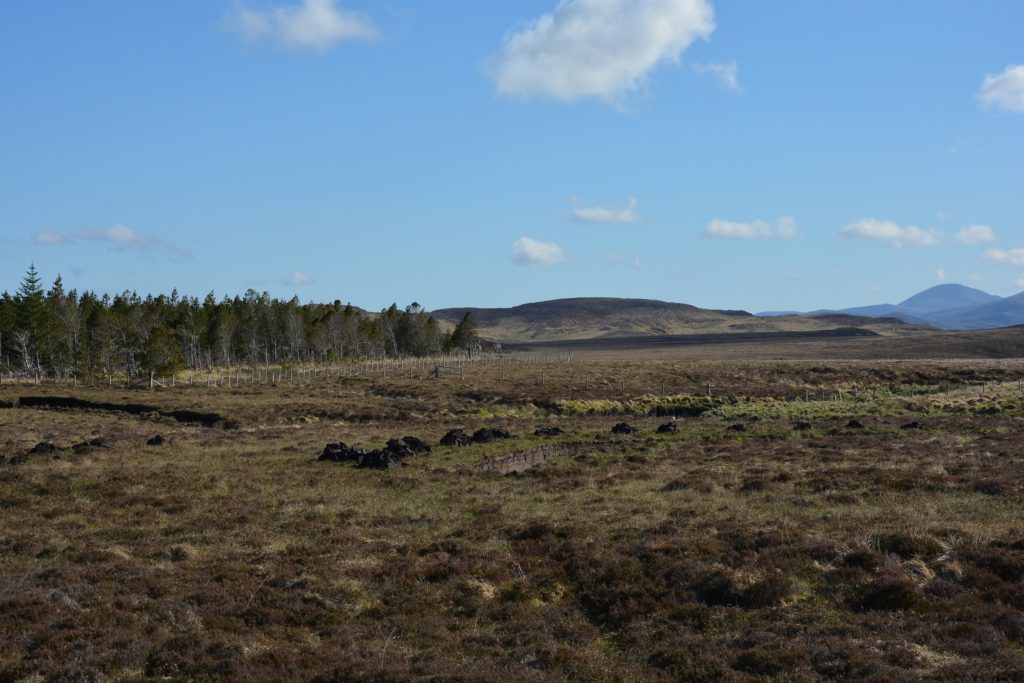A new report published by the EU Carbon-Connects and the EU Care-Peat project found that the restoration of peatland can significantly reduce greenhouse gas emissions (GHGs), while yielding financial benefits for farmers through the sale of carbon credits and ecosystem services.
Valentina Sechi of Carbon Connects and Van Hall Larenstein University in the Netherlands said:
“Carbon credits combined with payment for other ecosystem services can potentially provide farmers and other landowners with a good source of income from peatland restoration projects.”
Carbon storage function
Peatlands are lands on peat soils which consist of at least 80% organic material. If these lands are healthy and fully functioning (still actively forming new peat), they are then the most space efficient long-term carbon store and sink in the planet’s biosphere.
However, about 15% of the world’s peatlands have been drained for agricultural use, extracted for horticultural use or burned and mined for fuel.
When peatlands are drained or burned they release centuries of stored carbon into the atmosphere, globally amounting for roughly 1.6 gigatons of carbon dioxide equivalent (CO2e) annually – about twice that emitted directly from aviation.
CO2e is a metric measure used to compare the emissions from various GHGs on the basis of their global-warming potential.
Degraded peatlands account for over 5% of all GHGs in the EU.
Niall Ó Brolcháin of the National University of Ireland (NUI) Galway, the policy lead of the EU Care Peat project, stated:
“Peatland restoration has the potential to reduce emissions across Europe by up to 5% and I see no reason why farmers, landowners and rural communities shouldn’t benefit significantly from it.”
Restoring and rewetting
Restoring and rewetting damaged or drained peatlands and subsequently the sustainable use and maintenance of functional peatlands are the highest priority for reducing GHG emissions and climate change mitigation.
“By preserving, protecting and restoring peatlands we can reduce emissions and revive an essential ecosystem with high values and co-benefits for climate regulation, biodiversity, conservation and human welfare,” the report stated.
The potential benefits of rewetting for an individual landowner, according to the publication, are as follows:
- Secure and guaranteed income for the duration of the project, typically 30 to 50 years;
- Opportunity to contribute greatly towards societal change and to improve the natural environment and water system/hydrology;
- Opportunity to maintain active management and/or farming on the land (in the case of paludiculture or sustainable grasing management);
- Potential to reduce GHG emissions significantly.

Carbon credits and blue credits
A carbon credit is a unit of measurement that represents either the removal or the prevented emission of 1t of CO2e from the atmosphere.
Buying such credits enables a buyer to offset their GHG emissions, while enabling a seller to finance the changes needed to reduce GHG emissions.
According to the report – towards a carbon credit and blue credit scheme for peatlands – these lands provide many additional ecosystem services which can potentially yield additional income.
Such ecosystem services include: the regulation and maintenance of water quality and quantity, flow attenuation, groundwater replenishment, evaporative cooling, socioeconomic benefits and nursery/long-term habitats important for biodiversity.
A blue credit defines tradable certificates for water-related services provided by sustainable peatland management, based on the idea that functional peatlands and wet agriculture practices provide additional services to GHG reduction, e.g. water storage, water retention and water purification.
Socio-economic models
Considering financial and ecological aspects, peatlands with the greatest level of GHG emissions are the primary target. Smaller sites can also be rewetted, however such restoration projects need to be subsidised to be viable.
The report furthermore stated:
“It is clear that blended economic models designed to maximise output for farmers on rewetted peatlands could provide the best overall outcomes taking into account all social, environmental and financial requirements.”
The paper found that carbon credits are a potentially viable source of income for farmers and other landowners depending on price.
In Ireland, based on the average cost of €558 for rewetting and monitoring, a restoration project can lead to an income of €377/ha from carbon credits.
However, this is largely focused on project costs and other farm costs may need to be considered.
Additional sources of income may include subsidies, tax breaks, income from ecosystem services and income from new types of farming on wet peatlands.
Conclusion
The report concludes highlighting the potential of peatlands significantly reducing GHGs, however also points out the need for financial measures and further issues of concern which include the following:
- Financial measures are needed to incentivise peatland rewetting and restoration and to reward those who already maintain peatlands in good condition;
- Carbon credit systems on their own do not effectively support sustainable peatland management practices and restoration;
- The credibility of credits issued needs to be guaranteed by governmental regulatory systems or to be accredited to an accepted industry standard;
- The current carbon credit price is still too low to be attractive without additional subsidies;
- Common guidelines on how to measure and account for carbon and blue credits at EU level are urgently needed to enable credits obtained from peatland restoration projects to reach investors and the international markets.
